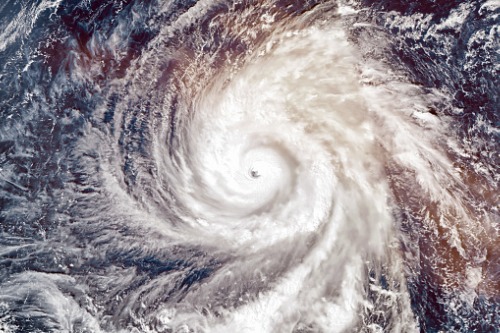

On August 29, 2005, Hurricane Katrina made landfall near Grand Isle, Louisiana as a Category 3 storm, with winds reaching speeds of up to 127mph. The devastating storm led to approximately 1,200 fatalities, and cost an estimated $108 billion in property damage, making Katrina the costliest US storm on record.
The city of New Orleans was one of the hardest hit. It experienced catastrophic flooding after a number of its aging levees failed during the storm. Ten-years after Katrina’s fatal blow, then-President Barack Obama acknowledged the mass infrastructure failure, saying: “What started out as a natural disaster became a man-made disaster—a failure of government to look out for its own citizens.”
When Katrina struck in 2005, most of New Orleans (roughly 80%) was within a Federal Emergency Management Agency (FEMA) flood zone, meaning most properties with a federally backed mortgage held flood insurance through the National Flood Insurance Program (NFIP). This means the community was somewhat able to rebuild once the disaster had subsided.
Despite 80% of New Orleans residents carrying flood insurance, the city still had a huge problem with blighted property for many years after Katrina. In fact, it’s still today trying to get blighted properties renovated and sold.
In 2016, FEMA updated its flood maps for New Orleans, moving 53% of the city’s properties out of high-risk zones, meaning they do not need to carry flood insurance. This decision gave a lot more property owners the choice of whether or not to purchase flood insurance, with many choosing the latter due to the narrative flood maps tend to present, which is: ‘Red zone – you’re at risk; green zone – you’re not.’
Louisiana-based insurance agent, Darin Helm, of Riverlands Insurance Services, said FEMA’s flood map alterations in New Orleans have created a “terrible situation” for individual consumers and the city as a whole.
He told Insurance Business: “The changes saved a lot of people a lot of money, but the problem is, if another major flooding event occurs, and they decided not to purchase flood insurance, they’re left in a terrible situation where they’re going to lose a lot of money, and the city as a whole is put under a lot of stress.
“Yes, it’s your house and it’s a personal decision whether you buy flood insurance or not, but when a collective group of people in a densely populated space opt to go without coverage, how is that community ever going to rebuild after an event? How can you recover when you have no money to fund the system and pay all the bills?”
FEMA’s changes to the New Orleans flood maps weren’t just introduced overnight. After Katrina, the city made a lot of improvements to its infrastructure, introducing flood walls and shoring up flood defenses. The changes came after years of evaluation and analysis. However, according to Helm, FEMA’s decision was short-sighted.
“Flood defenses are great, and they definitely help, but at the end of the day, another Katrina-type event is not an ‘IF it will ever happen again’; it’s a ‘WHEN it will happen again’. New Orleans is in a bowl. You can have all the flood protections you want, but if a big enough storm comes through, that bowl’s going to fill up,” Helm commented. “If that happens, New Orleans could be left with a blighted property problem that it may never be able to recover from, especially if fewer people are purchasing flood insurance.
“In my opinion, everybody should carry flood insurance. It should be mandated by the federal government that anybody with a federally backed mortgage should be required to carry flood insurance. It’s only $480 for the maximum policy, and it protects the entire community in the event that something should happen.
“As things stand, if New Orleans floods again, nobody would be able to rebuild because they didn’t buy flood insurance. That means the real estate market would tank because nobody would move to New Orleans looking for a job, and then obviously the tourism community would falter as well – all issues stemming from inadequate flood mapping. I think a lot of people don’t understand just how important flood insurance is.”
